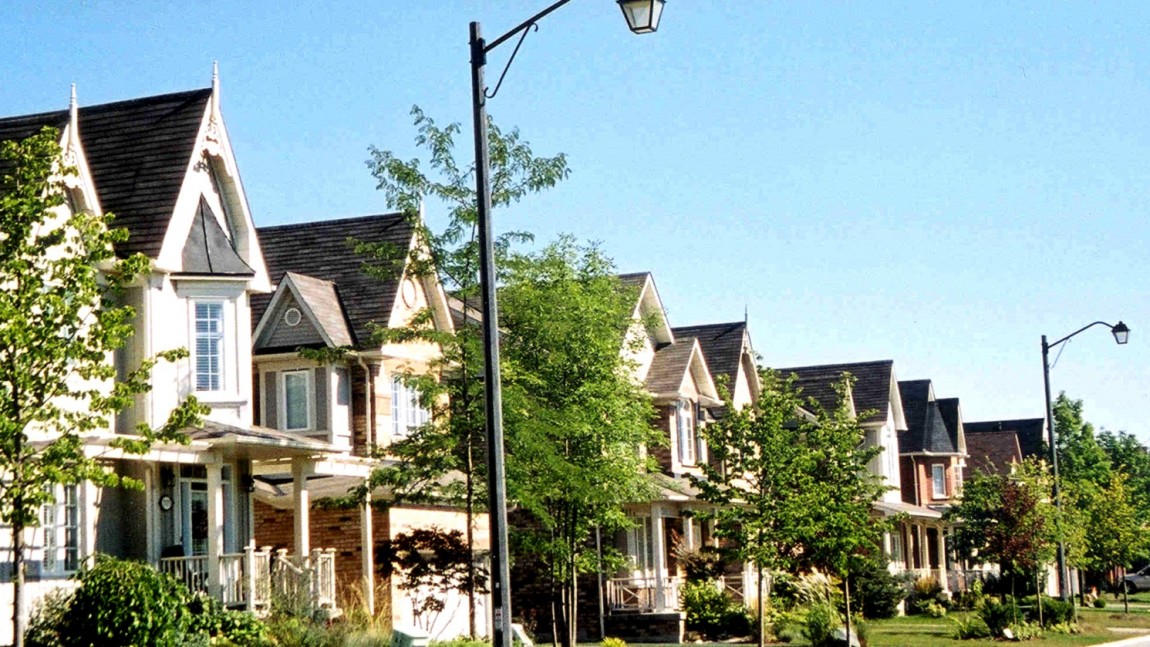STATE OF THE URBAN FOREST IN THE GREATER TORONTO AREA REPORT RELEASED
Just as highways, storm sewers or transit lines are vital components of infrastructure, so is the Urban Forest of the Greater Toronto Area – and it should be regarded as such by policy makers at every level. That finding is one of many coming out of the first ever State of the Urban Forest report, released at the Grey to Green Conference at Ryerson University.
More than 34 million trees and shrubs make up the GTA Urban Forest. Today, to better fight climate change and improve the quality of life in our communities, those trees and shrubs are critically important.
Though most wouldn’t think of urban forests as significant elements of urban infrastructure, the fact is, trees clean and cool our air, protect our water, decrease flooding, reduce energy use and associated carbon emissions. The GTA’s Urban Forest also helps mitigate climate change by directly storing more than 2.7 million tons of carbon.
“We’re thrilled to release this report, which represents the collective efforts of 17 local and regional governments,” Janet McKay, Chair of Green Infrastructure Ontario Coalition said. “Together, they have established baseline data which will be critical to managing the urban forest into the future. Most importantly, they all used the same protocol, which allowed us to compile it into this GTA-wide report.
“More than 3 million trees have or are expected to die due to Emerald Ash Borer. We will undoubtedly loose even more to development pressures and increasingly frequent storms” McKay added. “We have to do more to protect and proactively manage what we have.”
“Living green infrastructure such as the urban forest, wetlands, green roofs and walls delivers multiple benefits, but is not recognized by senior level governments for investment” Steven W. Peck, founding member of Green Infrastructure Ontario Coalition said. “It would cost an estimated $14.2 billion to replace the trees in the GTA’s urban forest. Clearly, our trees are valuable and senior levels of government need to integrate this type of green infrastructure into their plans. Addressing climate change by investing in the capacity of local and regional governments, non-profit organizations and the private sector to restore and expand our urban forest and to develop and restore other types of green infrastructure is the right thing to do.”
Summary of main findings:
- 2 million trees provide 26% canopy cover in the GTA
- Replacement cost of these trees and shrubs is $14.2 billion
- $70 million is the estimated value of the 2.7 million tons of carbon stored
- $36.5 million is the estimate annual value of air quality improvements
- $20 million is the estimated annual value of energy savings
- 113,000 tons of carbon is removed every year – this is equivalent to the emissions of 23,000 passenger vehicles.
- 4,000 tons of pollution removed from the air annually (including 2,300 tons of ground level ozone)
- 10% of tree population is Ash (3.2 million trees). We have already lost a large number of them to EAB.
- 54% of trees are made up of four species (Maple, Cedar, Ash, and Buckthorn).
- 85% of trees are small (diameter less than 22.9cm)
- 37% of trees are on residential property. 18% on commercial industrial, 25% on open space, agriculture and natural area, and 20% on institutional, transportation and other.
- The underlying studies were conducted between 2005 and 2014.
The Green Infrastructure Ontario Coalition (GIO) is a collaborative alliance of not-for-profits organizations, community groups, businesses and local governments working to sustain green infrastructure across Ontario. Our mission is to bring organizations together to share information and collaborate for improved green infrastructure policies and programs across the province.
Media Contact:
Elizabeth Oakley
Toronto and Region Conservation Authority (TRCA)
(416) 274-2036
eoakley@trca.con.ca

